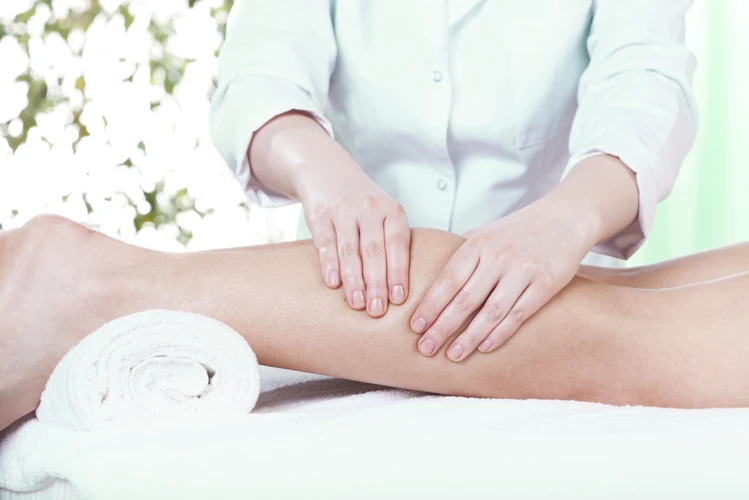Are you looking to learn how to make a professional-level massage right at home? Massages are a great way to relax and relieve stress, and it’s easier than you think to learn how to give a professional-level massage. With the right techniques and a little bit of practice, you can give a massage that’s as good as any you’d get at a spa. In this article, you’ll learn the basics of how to make a massage that’s both relaxing and therapeutic.
Contents
Benefits of Massaging
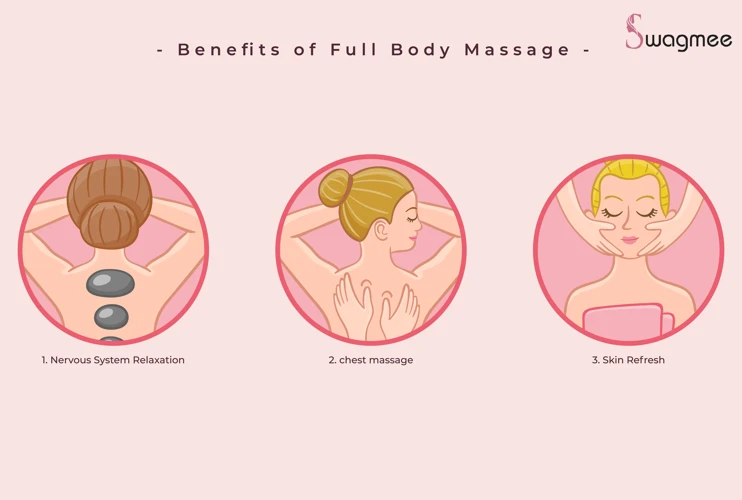
Massaging is a great way to relax, rejuvenate, and improve overall well-being. It can help relieve tension, reduce pain and muscle soreness, improve circulation, and reduce stress levels. Massaging can also be beneficial for those with chronic illnesses or injuries, as it increases blood flow to the affected area, helps release endorphins, and can reduce inflammation. Additionally, massaging can help improve posture and mobility, reduce fatigue, and improve sleep. Tips on how to massage a man include using long, slow strokes and circular motions, paying attention to areas of tension, and avoiding any areas that are too sensitive or painful.
| Benefit | Description |
|---|---|
| Relieve tension | Helps reduce muscle tightness and spasms. |
| Reduce pain and muscle soreness | Helps to reduce inflammation, which can lead to decreased pain. |
| Improve circulation | Increases blood flow to the area, which can help speed up healing and reduce discomfort. |
| Reduce stress | Helps to lower cortisol levels, which can result in a calmer state of mind. |
| Improve posture and mobility | Increases flexibility, allowing for improved movements and better posture. |
| Reduce fatigue | Increases energy levels, helping to reduce feelings of exhaustion. |
| Improve sleep | Helps to relax the body and mind, promoting better quality sleep. |
Preparing the Massage Environment
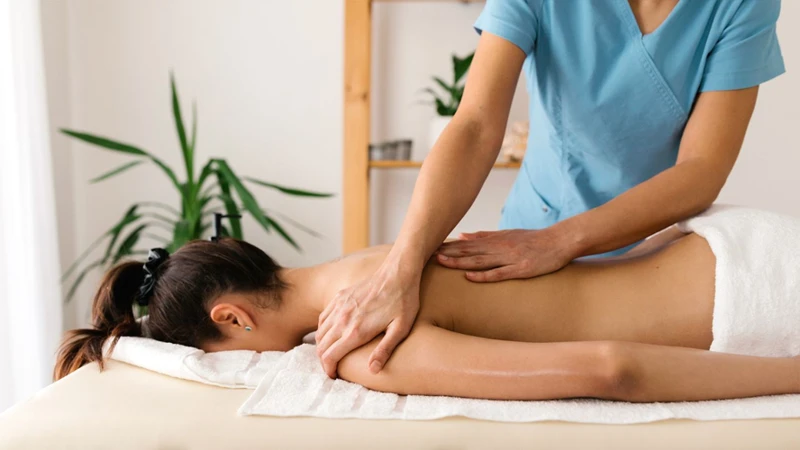
Preparing the Room
The massage room should be cozy and comfortable for both you and the client. Make sure the room is free from any clutter. Keep the temperature in the room comfortable. Use candles, soft music and dim lighting to create a relaxing atmosphere.
Preparing the Massage Table
The massage table should be comfortable for the client. Choose a massage table that is firm and sturdy. Use an appropriate massage table cover and make sure it is clean and free from any dirt or debris.
Preparing the Massage Oil
Choose the right massage oil for your massage. Massage oil should be non-greasy and not too thick. It should provide sufficient glide without being too slippery. Make sure to test the massage oil on a small area of your skin before using it on the client.
Understanding the Different Types of Massages
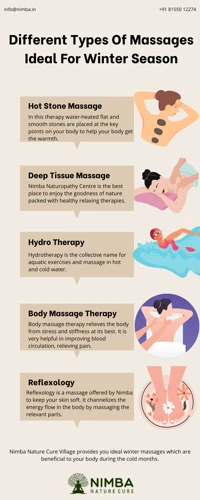
Massages come in various forms, ranging from therapeutic to relaxation. Each type of massage has its own set of benefits, so it’s important to understand the differences to make the best choice. Here are some of the most common types of massage:
Swedish Massage: This massage is a classic and the most popular type of massage. It involves long, gliding strokes, kneading, and friction techniques on the more superficial layers of muscle. It is designed to relax the body, reduce stress, and improve circulation.
Deep Tissue Massage: This type of massage is designed to target the deeper layers of muscle and connective tissue. It is used for chronic pain and muscle tension, and focuses on releasing knots and restoring the body’s natural alignment.
Sports Massage: This massage is specifically designed for athletes. It is typically used before or after physical activity to improve performance and reduce recovery time. It focuses on stretching, range of motion, and increasing circulation.
Trigger Point Massage: This type of massage is used to target knots, or trigger points, in the muscles. These knots can cause pain, tension, and reduced range of motion. The massage focuses on releasing the knots and restoring normal muscle function.
Shiatsu Massage: This massage is based on traditional Chinese medicine and involves the use of pressure points. It is designed to balance the body’s energy and improve overall health.
Hot Stone Massage: This type of massage is done using heated stones placed on the body. The heat helps to relax the muscles and ease tension.
Thai Massage: This massage is done without the use of oils or lotions and involves stretching and compression. It is designed to improve flexibility and reduce stress.
By understanding the different types of massage, you can make an informed decision when it comes to selecting the right massage for you. Whether you’re looking for relaxation or pain relief, there is a type of massage that can help.
Massage Techniques for Men
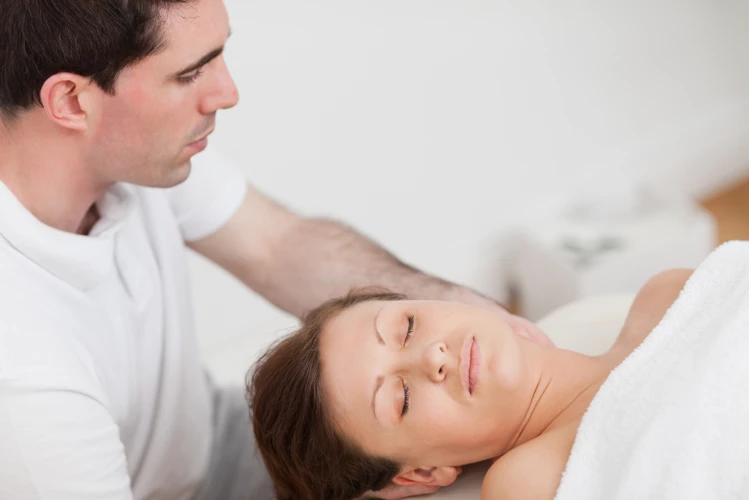
Swedish Massage
Swedish massage is the most commonly used massage technique. It uses long, gliding strokes to improve circulation, reduce tension, and promote relaxation.
Deep Tissue Massage
Deep tissue massage is used to target and release areas of tension in the body. The massage therapist applies firm pressure to the deeper muscle layers and connective tissues.
Sports Massage
Sports massage is used to prevent and treat injuries, enhance athletic performance, and speed up recovery time. The massage therapist applies deep, specific strokes to help increase range of motion and improve flexibility.
Trigger Point Massage
Trigger point massage is used to relieve pain and discomfort in areas of the body that are sensitive to touch. It involves the application of pressure to specific points in the body to help alleviate pain.
Shiatsu Massage
Shiatsu massage is a type of massage therapy that focuses on stretching, kneading, and applying pressure to pressure points in the body. It is believed to help improve blood circulation, reduce stress, and promote relaxation.
Massage Strokes
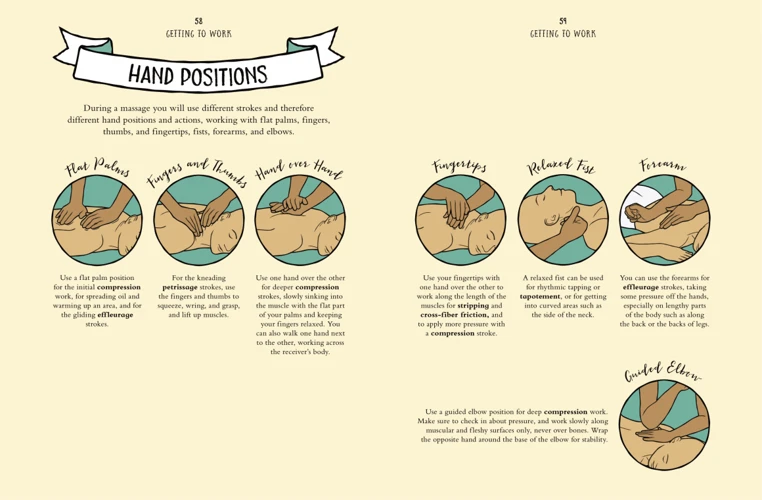
Gliding and Kneading
Gliding and Kneading are two of the most common massage strokes. Gliding is when you move your hands along the contours of the body in a continuous, smooth motion. Kneading is when your hands make circular motions on the body, like kneading a piece of dough.
Friction
Friction is used to work on specific areas of the body. It involves applying pressure with your thumbs and fingers in a circular motion. This helps to increase circulation and reduce muscle tension.
Percussion or Tapotement
Percussion or Tapotement is when you use your hands and fingers to rhythmically tap on the body. This massage stroke is used to stimulate circulation and to relax the muscles.
Vibration
Vibration is when you use your hands to vibrate or shake the body in a rhythmic motion. This helps to stimulate circulation and to relax the muscles.
Massage Safety Tips
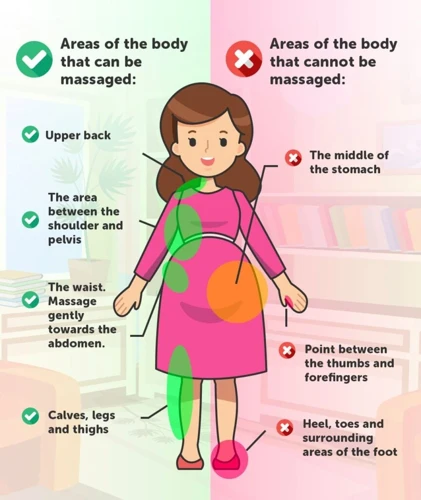
Know Your Client: Don’t massage someone you don’t know. Make sure your client is aware of any contraindications to massage therapy and is not under the influence of drugs or alcohol.
Sanitize: Make sure you and your client are both clean and your massage area is sanitized. Use clean sheets, towels, and massage oils.
Keep it Professional: Refrain from crossing any boundaries during the massage. Respect your client’s privacy and don’t engage in any activities of a sexual nature.
Be Aware of Your Client’s Comfort: Make sure your client is comfortable throughout the massage. Pay attention to the client’s body language and adjust the pressure or technique if needed.
Know Your Limits: Don’t overexert yourself. Massage can be physically demanding, so make sure you take breaks when needed.
Stay Informed: Stay up to date on the latest massage techniques and safety protocols.
| Sanitize | Keep it Professional |
|---|---|
| Use clean sheets, towels and massage oils | Refrain from crossing any boundaries |
| Sanitize massage area | Respect your client’s privacy |
| Make sure you and your client are clean | No activities of a sexual nature |
Proper Posture for Massaging
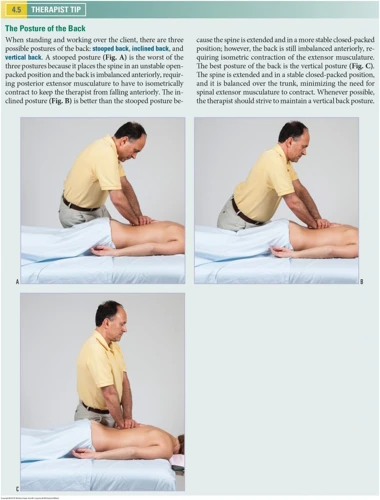
- Keep your back straight: When performing a massage, it’s important to keep your back straight and maintain proper posture. This will help ensure a comfortable session for you and your client.
- Keep your elbows bent: Keeping your elbows bent while massaging will help to keep your arms relaxed and avoid any strain on your wrists and shoulders.
- Support your arms: If you’re performing a deep tissue massage, it’s important to support your arms with a bolster or cushion. This will help you to maintain the proper posture and avoid any strain on your arms.
- Change positions often: To avoid straining your back and arms, it’s important to change positions often. You can alternate between standing and sitting or use different postures throughout the session.
- Be mindful of your breathing: It’s important to be mindful of your breathing throughout the massage session. Taking deep breaths will help to keep you relaxed and ensure a comfortable session for both you and your client.
Conclusion

Giving a professional-level massage at home is easier than you may think. With the right materials and knowledge, you can craft an amazing massage experience for your partner. Here are some tips on how to make a massage:
- Choose the right massage oil.
- Choose the right massage technique.
- Create the perfect ambiance.
- Know the massage pressure points.
- Keep communication open.
Remember to always keep safety in mind when giving a massage, and never go beyond your partner’s comfort level when it comes to pressure. With practice and patience, you can become a master of massage and bring your partner to ultimate relaxation with a professional-level massage right at home.
References
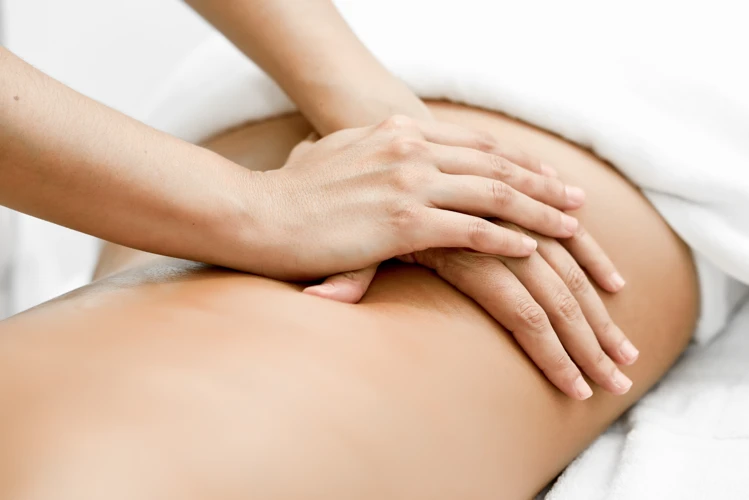
- How to Make a Massage: A step-by-step guide to giving a massage, including tips and techniques for a professional-level massage right at home. [1]
- Tips on How to Massage a Man: A comprehensive guide on how to massage a man, including step-by-step instructions, different techniques, and tips for a pleasurable experience. [2]
- Benefits of Massage: A look at the benefits of massage for both the receiver and the giver, including physical and mental benefits. [3]
Tips on How to Make a Professional-Level Massage at Home
Choose the Right Massage Oil: Start by selecting an oil that is free of artificial fragrances and preservatives. Natural oils such as olive, almond, and coconut oil are best as they help to nourish and protect the skin while also providing a smooth glide.
Create a Relaxing Atmosphere: Setting a calming environment is key to making a professional-level massage. Dim the lights, light scented candles, and play soothing music to create a tranquil atmosphere.
Incorporate Different Techniques: To replicate a professional massage, use a variety of massage techniques, like kneading, effleurage, and tapping. These techniques help to relax the muscles and provide deep tissue stimulation.
Pay Attention to Pressure: Apply the right amount of pressure when massaging. Too much pressure can cause pain and discomfort, while too little pressure can make the massage ineffective.
Keep it Varied: Vary the intensity and speed of the massage to prevent the recipient from getting too comfortable. This will keep them alert and focused on the massage.
Be Attentive: Pay attention to the client’s body language and adjust the massage accordingly. If the person is uncomfortable, take a break and use a lighter touch.
End with a Relaxing Touch: To finish the massage, use long, gentle strokes over the entire body. This will help the person to relax and feel more at ease.
Frequently Asked Questions
What types of massage can be performed at home?
Swedish Massage: This is the most popular massage modality and is great for relaxation and stress relief. It involves long, flowing strokes and kneading of the muscle tissue.
Deep Tissue Massage: This type of massage is used to target deeper layers of muscle and connective tissue. This is great for releasing chronic muscle tension.
Sports Massage: This type of massage is designed to help athletes improve their performance and recovery. It helps to reduce muscle tension and improve flexibility.
Trigger Point Massage: This type of massage targets specific areas of tight muscle fibers. It helps to relieve pain and improve mobility.
Reflexology: This technique involves applying pressure to specific areas of the hands and feet. It is believed to help promote relaxation and improve overall wellness.
Shiatsu Massage: This type of massage uses finger pressure to stimulate the body’s energy meridians. It is believed to help improve circulation, reduce stress, and promote relaxation.
What Supplies Are Needed for a Professional-Level Massage?
Massage therapy requires a few basic supplies in order to be done correctly and professionally. These include: a massage table, massage oils, towels and sheets, and massage lotions or creams. Depending on the type of massage, additional items such as bolsters, adjustable face cradles, hot stones, and massage tools may also be needed. Additionally, a relaxing atmosphere should be created, with candles and/or music, in order to provide the best massage experience to the customer.
Is there a Specific Massage Technique to Use at Home?
Yes! There are several massage techniques you can use at home to make your massage professional-level. Here is a list of massage techniques you can use:
- Swedish massage – a popular massage technique that uses long strokes and kneading movements to relax the muscles and target areas of tension.
- Deep tissue massage – a massage technique that targets the deeper layers of muscle tissue and tendons to relieve chronic pain and tension.
- Trigger point therapy – a massage technique used to treat specific areas of pain that are caused by tension or tight muscle knots.
- Sports massage – a massage technique that helps to reduce muscle soreness and improve flexibility, power, and performance.
- Shiatsu massage – a traditional Japanese massage technique that uses pressure points and kneading movements to relieve tension and stress.
- Hot stone massage – a massage technique that uses heated basalt stones to relieve muscle tension and improve circulation.
Be sure to follow the proper technique and safety precautions when using any of these massage techniques. If you are unsure, it is always best to consult with a professional massage therapist.
Are there any safety considerations to be aware of in a home massage?
Incorrect Technique: Incorrect massage technique can cause damage to muscle tissue and soft tissue. It is important to learn the correct technique and apply it correctly.
Pressure: It is important to be aware of how much pressure you are applying during the massage. Too much pressure can cause pain or discomfort to the recipient.
Injuries: It is important to be aware of any injuries that the recipient may have before the massage. If the recipient is injured, it is important to modify the massage accordingly.
Communication: It is important to communicate with the recipient during the massage. Ask the recipient if the pressure is too light or too hard. Ask if the recipient is comfortable or if any adjustments need to be made.
Hygiene: Hygiene is important when giving a massage. Make sure to use clean sheets and towels and wash your hands before and after the massage.
Environment: The environment should be comfortable and relaxing. Make sure you have enough space to move around and that the room is warm.
What tips can be used to ensure a successful massage at home?
- Choose the right oil: Select an oil that suits the person’s skin type and the type of massage you plan to give.
- Create a relaxing atmosphere: Set up a comfortable and cozy environment with soft lighting and calming music.
- Prepare the area: Cover the massage area with a cloth or towel and make sure it is warm enough.
- Be mindful of pressure: Start with a light touch and gradually increase the pressure to the person’s comfort level.
- Focus on breathing: Encourage the person to take deep breaths throughout the massage.
- Pay attention to feedback: Ask the person for feedback on the pressure and technique used.
- End the massage properly: Finish with a few gentle strokes and allow the person to rest for a few minutes.
Conclusion

Making a professional-level massage at home is not as difficult as it seems. With a few basic massage supplies and techniques, you can create an enjoyable, relaxing experience for yourself or your partner. By using the correct massage oils, following the steps outlined in this article, and practicing regularly, you will be able to create a massage that is both enjoyable and therapeutic.
References


